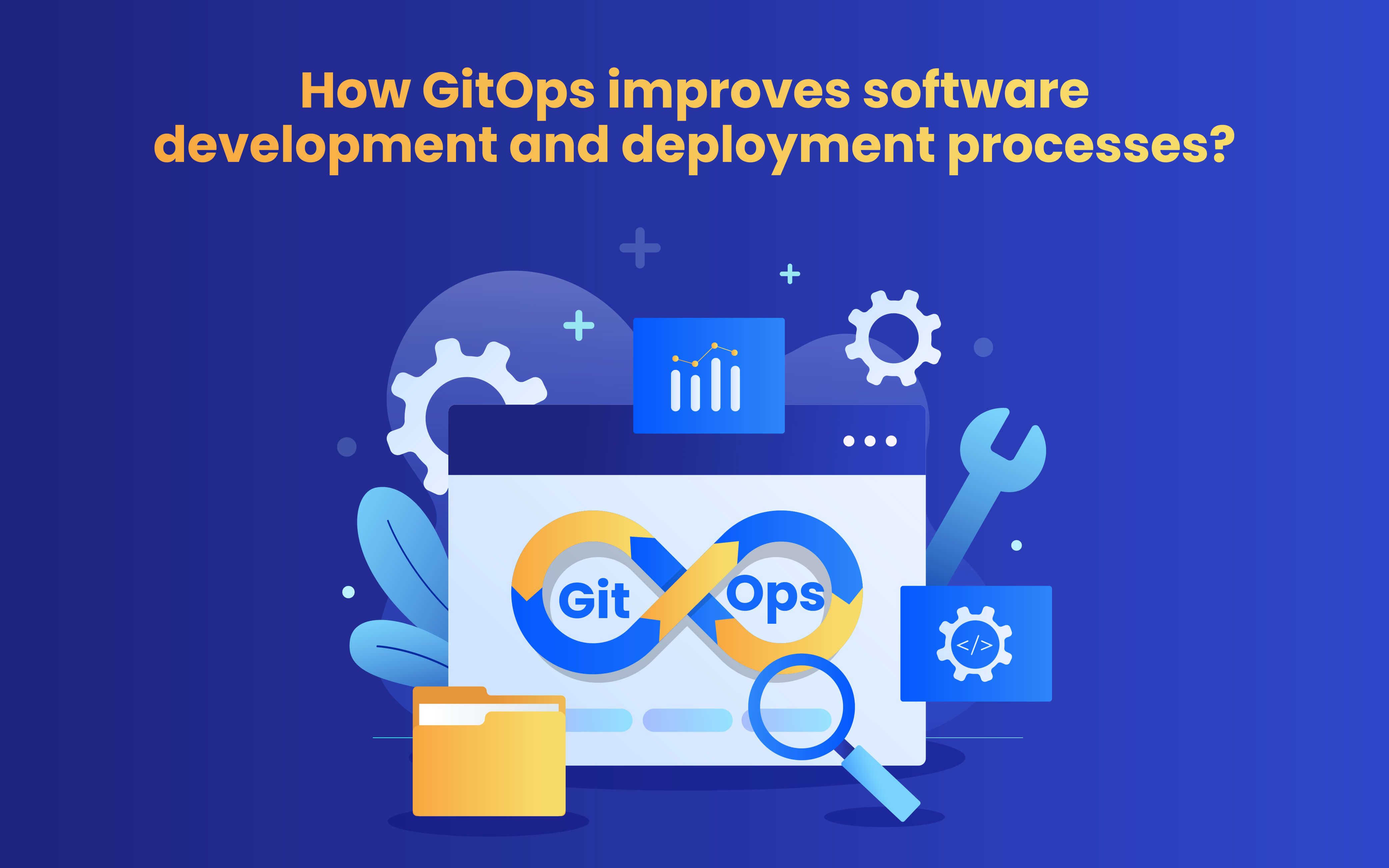Blogs
To know about all things Digitisation and Innovation read our blogs here.
GitOps
How GitOps improves software development and deployment processes?
SID Global Solutions
17 March 2023

GitOps is a modern software development methodology that has gained popularity over the past few years. It is a combination of two things: Git, which is a popular version control system used for software development, and operations, which is the process of deploying and managing software applications. With GitOps, software development and deployment processes are streamlined, automated, and made more efficient.
In this comprehensive guide, we will explore how GitOps improves software development and deployment processes. We will start by defining GitOps and then discuss its principles and best practices. Next, we will explore the benefits of using GitOps in software development and deployment, including increased productivity, reduced errors, and improved security. Finally, we will look at some practical examples of how GitOps is used in software development and deployment.
Also Read: The Role of Serverless Architecture in DevOps and Agile Development
Defining GitOps
GitOps is a software development methodology that emphasizes the use of Git as a single source of truth for defining and managing infrastructure and application configurations. With GitOps, all changes to the application or infrastructure are made through a Git repository, which acts as a central hub for managing the application lifecycle. This approach enables continuous delivery and deployment by providing a consistent and reliable way to deploy software.
GitOps can be used with any cloud platform, but it is most commonly used with Kubernetes, an open-source container orchestration platform. With Kubernetes, GitOps enables developers to automate the deployment of containerized applications using a declarative approach. This means that the desired state of the application is defined in a configuration file and Kubernetes ensures that the application always remains in that desired state.
Principles of GitOps
There are several key principles that define GitOps. These include:
Declarative approach: GitOps follows a declarative approach to configuration management, meaning that the desired state of the system is defined in a configuration file. This file is then used to deploy and manage the application or infrastructure. The configuration file is version-controlled in Git and changes are made through pull requests.
Continuous delivery and deployment: GitOps enables continuous delivery and deployment by automating the process of building, testing, and deploying software applications. With GitOps, developers can easily deploy new versions of their application with a single commit to Git.
Git as a single source of truth: Git is the single source of truth for managing the application lifecycle. All changes to the application or infrastructure are made through Git, which ensures that everyone is working from the same codebase. This approach reduces errors and improves collaboration among team members.
Automated processes: GitOps relies on automation to streamline the software development and deployment process. Automated processes ensure that the application is deployed consistently and reliably across different environments.
Also Read: How AIOps and DevOps Enable Successful Digital Transformation?
Benefits of GitOps
There are several benefits to using GitOps in software development and deployment. These include:
Increased productivity: GitOps increases productivity by streamlining the software development and deployment process. With GitOps, developers can easily deploy new versions of their application with a single commit to Git. This approach reduces the time and effort required to deploy applications, allowing developers to focus on writing code.
Reduced errors: GitOps reduces errors by using a declarative approach to configuration management. The desired state of the application is defined in a configuration file, which is version-controlled in Git. This approach ensures that everyone is working from the same codebase, reducing the risk of errors.
Improved security: GitOps improves security by providing a consistent and reliable way to deploy software applications. With GitOps, all changes to the application or infrastructure are made through Git, which ensures that everyone is working from the same codebase. This approach reduces the risk of security vulnerabilities.
Scalability: GitOps is highly scalable, making it ideal for organizations that need to deploy applications across multiple environments. With GitOps, developers can easily deploy applications to different environments, ensuring that the application works consistently across all environments.
Improved collaboration: GitOps improves collaboration by providing a central hub for managing the application lifecycle. With Git as the single source of truth, team members can work together more efficiently, reducing the risk of errors and improving the quality of the final product.
Also Read: Azure DevOps Services Deployment Strategies: Best Practices for Success
Examples of GitOps
There are several practical examples of how GitOps is used in software development and deployment. These include:
Continuous deployment with Kubernetes and GitLab: GitLab is a popular Git repository management tool that includes continuous integration and continuous deployment (CI/CD) functionality. With GitLab, developers can create a pipeline that automatically builds, tests, and deploys applications to Kubernetes. The pipeline is triggered by a commit to the Git repository, ensuring that the application is always up to date.
Infrastructure as code with Terraform and GitOps: Terraform is a popular tool for defining infrastructure as code (IaC). With Terraform and GitOps, developers can define their infrastructure in a configuration file and use Git to manage changes to that configuration. This approach enables developers to manage their infrastructure in the same way they manage their application code, reducing the risk of errors and improving collaboration.
Multi-cloud deployment with Argo CD and GitOps: Argo CD is an open-source GitOps tool for deploying applications to Kubernetes. With Argo CD and GitOps, developers can easily deploy applications to multiple Kubernetes clusters across different cloud platforms, such as AWS, GCP, and Azure. Argo CD ensures that the application is deployed consistently and reliably across all environments.
GitOps for microservices with Flux and Istio: Flux is a popular GitOps tool for deploying and managing Kubernetes applications. With Flux and Istio, developers can deploy and manage microservices applications in a declarative and scalable way. Istio provides service mesh functionality, ensuring that the application is deployed consistently across all environments.
Conclusion
GitOps is a powerful software development methodology that can improve the efficiency, reliability, and security of the software development and deployment process. By using Git as a single source of truth, GitOps provides a consistent and reliable way to manage the application lifecycle. With its emphasis on automation and collaboration, GitOps enables developers to focus on writing code and delivering value to their users. As such, GitOps is a methodology that is worth exploring for any organization looking to streamline its software development and deployment processes.









